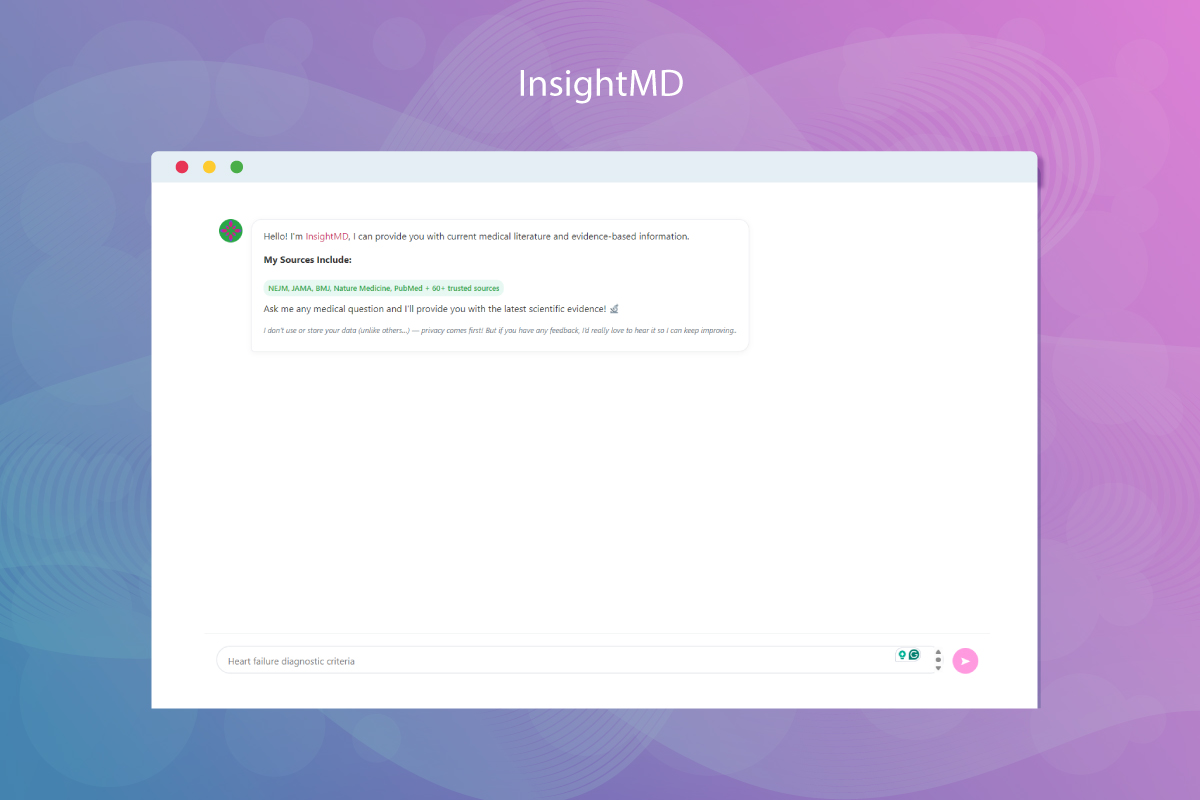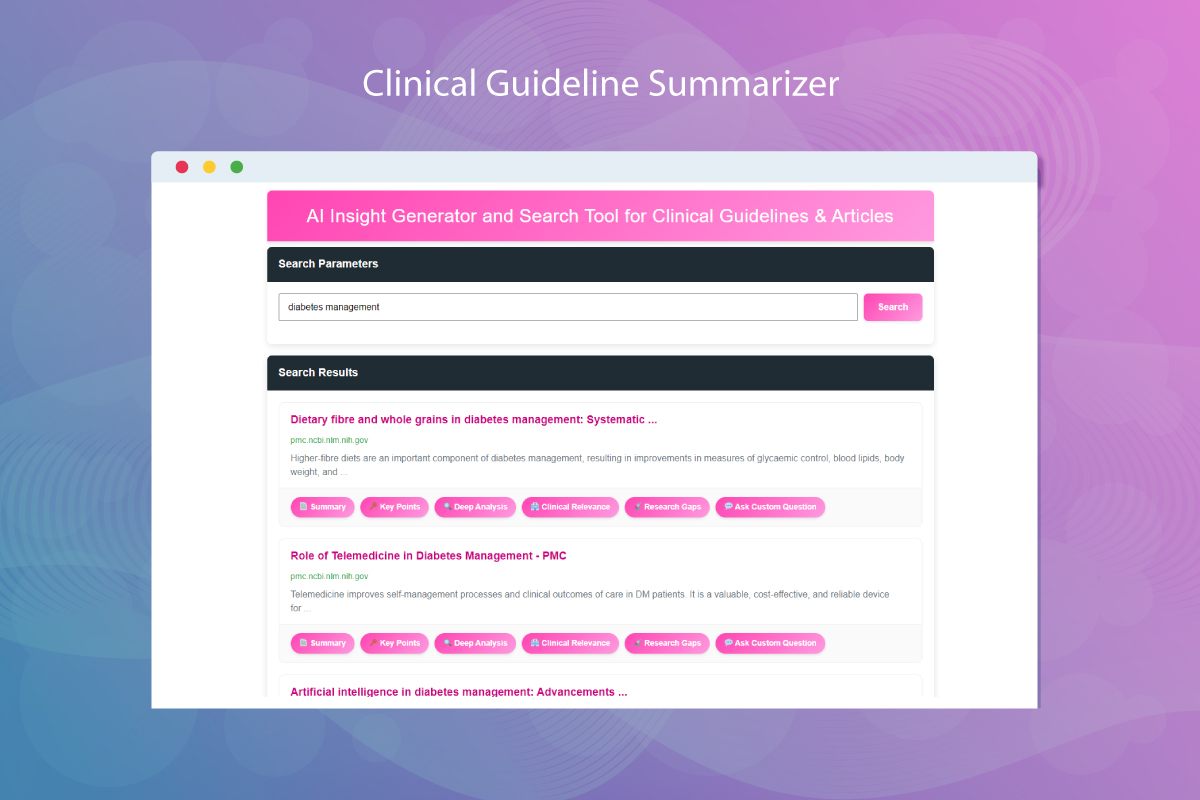AI Medical Search: Healthcare Research and Clinical Decision-Making in 2025
The Critical Need for Advanced Medical Information Access
Healthcare professionals face an unprecedented challenge in today’s information-rich environment. Medical literature doubles every 19 days, creating an impossible burden for clinicians to stay current. Traditional search methods often fail to deliver precise, actionable insights when time-critical decisions are required.
The explosion of medical research has created a paradox: while more evidence exists than ever before, accessing relevant information quickly has become increasingly difficult. Physicians spend countless hours sifting through databases, often missing crucial updates that could impact patient care.
Modern healthcare demands instant access to evidence-based information. Emergency situations, complex diagnoses, and evolving treatment protocols require tools that can rapidly synthesize vast amounts of medical literature into actionable insights.
What is AI Medical Search?
AI medical search represents a revolutionary approach to medical information retrieval, combining artificial intelligence with specialized medical databases. These systems understand medical terminology, clinical contexts, and the interconnected nature of healthcare knowledge.
Unlike traditional search engines, AI medical search platforms analyze the semantic meaning of queries, understanding medical abbreviations, drug interactions, and clinical relationships. They process information from peer-reviewed journals, clinical guidelines, and research databases simultaneously.
Advanced algorithms power these systems, enabling them to recognize patterns across multiple studies, identify conflicting evidence, and present synthesized findings. This technology transforms how healthcare professionals access and utilize medical knowledge.
These platforms leverage natural language processing to understand complex medical queries expressed in everyday clinical language. They can interpret context, medical history, and specific patient scenarios to provide targeted results.
🚀 Featured Free AI Medical Search Tools
InsightMD
AI-PoweredAdvanced AI medical search with instant access to evidence-based insights from 60+ trusted medical sources including NEJM, JAMA, and BMJ.
- Real-time literature synthesis with citations
- Multi-language support for global accessibility
- Privacy-first approach with no data storage
- Instant responses from top medical journals
Clinical Guideline Summarizer
Deep AnalysisComprehensive medical literature analysis tool that provides detailed insights, summaries, and custom question capabilities for any medical article.
- Deep content analysis with multiple view modes
- Custom question functionality for specific queries
- Research gap identification and clinical relevance
- Advanced content extraction from protected sources
Why Traditional Medical Search Falls Short
Information Overload Challenges
Traditional databases overwhelm users with thousands of results for simple queries. PubMed searches often return tens of thousands of articles, making it impossible to identify the most relevant information quickly.
Time constraints in clinical settings make extensive literature reviews impractical. Healthcare providers need immediate access to synthesized information rather than raw research data that requires hours to analyze.
Information fragmentation across multiple databases creates inefficiencies. Clinicians must search multiple platforms, each with different interfaces and search syntaxes, to gather comprehensive information.
Lack of Clinical Context
Generic search engines fail to understand medical nuances. They cannot differentiate between similar conditions, interpret drug interactions, or recognize the clinical significance of research findings.
Traditional tools lack personalization for specific medical specialties. A cardiologist’s information needs differ significantly from those of a pediatrician, yet most search tools treat all queries uniformly.
Missing synthesis capabilities mean healthcare providers receive disconnected pieces of information rather than cohesive, actionable insights that directly inform clinical decisions.
How AI Medical Search Transforms Healthcare Research
Intelligent Query Processing
AI-powered platforms understand medical terminology and can interpret queries expressed in natural language. They recognize synonyms, abbreviations, and clinical contexts that traditional search engines miss.
Semantic analysis enables these systems to understand the intent behind queries, not just keyword matches. They can differentiate between similar terms based on clinical context and user specialization.
Advanced filtering automatically prioritizes high-quality sources, recent publications, and evidence-based guidelines. This eliminates the need for manual filtering and ensures access to the most reliable information.
Real-Time Evidence Synthesis
AI algorithms synthesize information from multiple sources instantaneously, presenting cohesive summaries rather than fragmented results. This synthesis includes statistical analysis, treatment comparisons, and safety profiles.
Automated citation tracking ensures all information is properly sourced and verifiable. Users receive not just answers but also the complete reference trail for further investigation if needed.
Continuous learning allows these systems to improve over time, recognizing which sources and types of information prove most valuable for specific types of queries.
Personalized Medical Insights
Specialty-specific customization tailors results to individual medical practices. Oncologists receive different insights than emergency physicians, even for similar queries about the same condition.
Patient-specific considerations can be incorporated into searches, considering factors like age, comorbidities, and contraindications when presenting treatment options and recommendations.
Clinical workflow integration allows these tools to fit seamlessly into existing hospital systems and electronic health records, making them practical for daily use.
Key Features of Modern AI Medical Search Platforms
Advanced Source Integration
Comprehensive database access includes major medical journals, clinical guidelines, and research repositories. Top platforms integrate sources like NEJM, JAMA, BMJ, and specialized medical databases.
Real-time updates ensure users access the latest research findings and guideline changes. These systems monitor thousands of sources continuously for new publications and updates.
Quality filtering automatically prioritizes peer-reviewed sources and evidence-based guidelines while filtering out low-quality or potentially misleading information.
Intelligent Analysis Capabilities
Multi-dimensional analysis examines research from various perspectives, including efficacy, safety, cost-effectiveness, and patient outcomes. This comprehensive approach supports well-rounded clinical decisions.
Comparative analysis automatically identifies and summarizes differences between treatment options, helping clinicians understand the relative merits of various approaches.
Risk assessment integration highlights potential contraindications, drug interactions, and safety considerations relevant to specific patient populations or clinical scenarios.
User-Friendly Interface Design
Intuitive search interfaces accommodate natural language queries, allowing healthcare providers to search using the same language they use in clinical practice.
Visual result presentation includes charts, graphs, and structured summaries that make complex information easily digestible during busy clinical workflows.
Mobile optimization ensures access to critical information regardless of location, supporting point-of-care decision-making in various healthcare settings.
Benefits for Healthcare Professionals
Enhanced Clinical Decision-Making
Evidence-based practice becomes more accessible when relevant research is synthesized and presented in actionable formats. This improves the quality of clinical decisions and patient outcomes.
Reduced diagnostic uncertainty results from access to comprehensive, up-to-date information about symptoms, differential diagnoses, and treatment protocols.
Improved treatment selection is supported by comparative analysis of therapeutic options, including efficacy data, side effect profiles, and patient-specific considerations.
Time Efficiency and Productivity
Dramatic time savings result from instant access to synthesized information rather than hours spent reviewing individual studies and guidelines.
Streamlined research workflows eliminate the need to search multiple databases and manually compile information from various sources.
Point-of-care accessibility enables immediate consultation during patient encounters, improving both efficiency and the quality of care provided.
Continuing Medical Education
Automatic knowledge updates help healthcare providers stay current with evolving medical knowledge without dedicating extensive time to literature review.
Specialized learning paths can be customized based on medical specialty, areas of interest, and knowledge gaps identified through usage patterns.
Case-based learning opportunities arise from accessing relevant research and guidelines in the context of specific patient scenarios.
The Future of AI Medical Search
Emerging Technologies
Machine learning advancement continues to improve the accuracy and relevance of search results, with systems becoming better at understanding complex medical relationships.
Natural language generation enables AI systems to create human-readable summaries and recommendations based on vast amounts of medical literature.
Predictive analytics may soon allow these systems to anticipate information needs based on patient data and clinical patterns.
Integration Possibilities
Electronic health record integration will enable seamless access to relevant medical information directly within patient records and clinical workflows.
Telemedicine platform integration will support remote care delivery by providing instant access to medical knowledge during virtual consultations.
Mobile health applications will extend AI medical search capabilities to patients, supporting informed healthcare decisions and self-management.
Regulatory and Quality Considerations
Regulatory compliance remains essential as these tools become more integrated into clinical practice. Platforms must meet healthcare data security and privacy requirements.
Quality assurance mechanisms ensure the accuracy and reliability of AI-generated insights, maintaining the high standards required for medical decision-making.
Professional validation by medical experts continues to be crucial for maintaining trust and ensuring appropriate use of AI-powered medical search tools.
Introducing AI Medical Search Solutions
InsightMD: Your Advanced Medical Research Companion

InsightMD represents the cutting edge of AI medical search technology, designed specifically for healthcare professionals who demand immediate access to evidence-based information. This innovative platform transforms how medical research is conducted and applied.
Key features include:
- Instant access to 60+ trusted medical sources including NEJM, JAMA, BMJ, and Nature Medicine
- Real-time literature synthesis that provides comprehensive answers with proper citations
- Multi-language support for global healthcare accessibility
- Privacy-first approach ensuring complete data protection without storage or tracking
Advanced AI analysis powered by cutting-edge language models delivers context-aware responses tailored to specific medical queries. The platform understands medical terminology, clinical contexts, and provides actionable insights for immediate application.
Clinical Guideline Summarizer: Comprehensive Research Analysis

The Clinical Guideline Summarizer offers unprecedented depth in medical literature analysis, providing healthcare professionals with detailed insights into research papers and clinical guidelines.
Distinctive capabilities include:
- Deep content analysis with summary, key points, and clinical relevance extraction
- Custom question functionality allowing specific queries about any medical article
- Research gap identification highlighting areas needing further investigation
- Aggressive content extraction ensuring comprehensive analysis even from protected sources
Multiple analysis modes cater to different information needs, from quick summaries to comprehensive clinical evaluations. The platform excels at identifying practical applications and implementation strategies for research findings.
Both platforms represent the future of medical information access, combining artificial intelligence with deep medical knowledge to support evidence-based healthcare delivery. They eliminate information silos and provide instant access to the comprehensive, synthesized medical knowledge that modern healthcare demands.